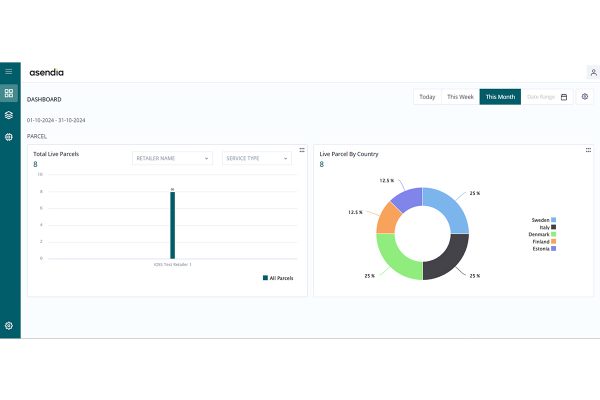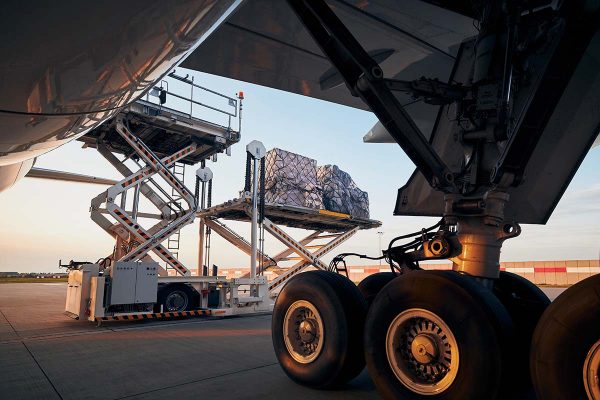Entering the US e-commerce market presents a lucrative opportunity for UK brands, but success hinges on careful planning and execution, writes Clara Philpin, Head of Strategic Development at Asendia UK.
The potential for UK brands to expand their e-commerce presence in the US is immense. Global marketplaces Amazon, eBay and Etsy offer easy access to massive online audiences stateside – ideal for dipping a toe in the water. But ambitious UK retailers should also consider extending that reach with social commerce. It’s estimated that 118 million Americans will be shopping on social media by 2027.
For American online shoppers, choosing a product from overseas is not a big concern. A recent IMRG survey highlights this opportunity, revealing that 39% of US consumers have purchased from UK brands online, and an impressive 74% expressed interest in doing so.
To capitalise on this potential, UK businesses must strategically tailor their approach to meet the expectations and preferences of American consumers.
Crucial tips to ensure your brand success in the USA
Here are three crucial tips to ensure your brand makes a successful impression in the vast US market.
1. Optimise content and payment for the USA
To resonate with US consumers, UK brands must adapt their product listings and descriptions to align with American preferences. This involves more than just language adjustments; it requires a deep understanding of cultural nuances and consumer behaviour.
Always use American English spellings and terminology to avoid confusion and enhance relatability. For instance, use “flavor” instead of “flavour” and “sweater” instead of “jumper.”
When it comes to measurement units, what we Brits usually call Imperial system measurements, are called US Customary. Convert measurements to this system, as Americans are more familiar with inches, feet, and pounds than centimetres and kilograms.
The right payment options must be offered too. Americans favour diverse payment methods, including credit cards, PayPal, and digital wallets like Apple Pay and Google Wallet. Ensuring these options are available can help reduce cart abandonment rates.
Don’t forget HTS Codes! Accurate Harmonized Tariff Schedule (HTS)[1] codes are critical for smooth customs clearance and compliance. The US requires a detailed 10-digit code for each exported item, which helps avoid delays and potential fines.
By meticulously optimising your e-commerce site to meet these standards, you enhance the shopping experience, making it easier and more appealing for US consumers to engage with your brand.
2. Tap into logistics partners’ knowledge and networks
Logistics will be a cornerstone of your e-commerce success, particularly in a market as vast and geographically diverse as the US. Partnering with a third-party logistics provider (3PL) that has an extensive network and established nationwide distribution hubs can provide several advantages.
They can offer more speed and efficiency. A 3PL with multiple distribution centres can ensure faster delivery times by reducing the distance products need to travel. This is crucial in meeting the high delivery expectations of American consumers.
A well-connected 3PL will have partnerships with local postal and delivery services – in Asendia’s case we call these our ‘local heroes’. These can enhance the reliability and speed of the final leg of the delivery process. And local expertise ensures packages are handled efficiently and delivered on time.
Scalability is another benefit 3PLs can provide. As your US market presence grows, a scalable logistics partner can seamlessly handle increased order volumes without compromising on service quality.
3. Streamline International Shipping and Returns
Shipping and returns policies can make or break an e-commerce experience. A key finding of Asendia’s recent Delivery & Returns Report[2] was that transparency really helps reassure international customers. While 27% of respondents said they choose to buy local because they’re concerned about returns and refunds policies, 22% would buy cross-border if the website gave clarity on this.
Clearly displaying costs and providing tracking information puts customers at ease and gives a feeling of being in control.
US consumers have high expectations regarding international returns, often preferring them to be free or at least hassle-free.
You can meet these expectations by transparently communicating shipping costs, delivery times, and return policies at every stage of the purchasing process. This includes clear information on your website, confirmation emails, and customer service interactions.
Offer a range of shipping options to cater to different needs. Some customers might prioritise cost over speed, while others might prefer expedited and tracked shipping despite higher costs. Providing choice ensures you cater to a wider audience.
Lastly, a seamless returns process is essential. Simplify the returns process with pre-paid return labels and easy-to-follow instructions. Consider using local return hubs through your 3PL partner to reduce the hassle and cost for consumers.
While offering free returns can be challenging, especially for smaller brands, consider a balanced approach where free returns are offered above a certain order value or for specific product categories. This strategy can mitigate potential losses while still meeting consumer expectations.
UK brands feeling ready to grow beyond their chosen online marketplace, have everything to play for. By optimising your online presence for the US market, partnering with a reliable 3PL, and streamlining shipping and returns processes, it’s possible to create a positive shopping experience that resonates with American consumers.
The potential is vast, and with the right approach, your brand can make a lasting impression on the other side of the Atlantic.










2 Responses
Great article, just curious how you suggest approaching the different state tax rates in a way that isn’t administratively intensive?
Pedantic point..non-metric measurements that are called “Imperial” in the UK are called “US Customary” in the US. The Imperial word is a bit of a no-no
US Customary is mostly the same except for liquid measure (pint is 16 oz, quart is commonly used and is 32, and so on up to half and full gallon, also bushels), very small weights (grains), and (not really relevant for ecommerce) chopped wood is sold by the “cord” (or fractions of a cord), while the UK doesn’t really measure chopped wood formally (or would be cubic meter if measured)